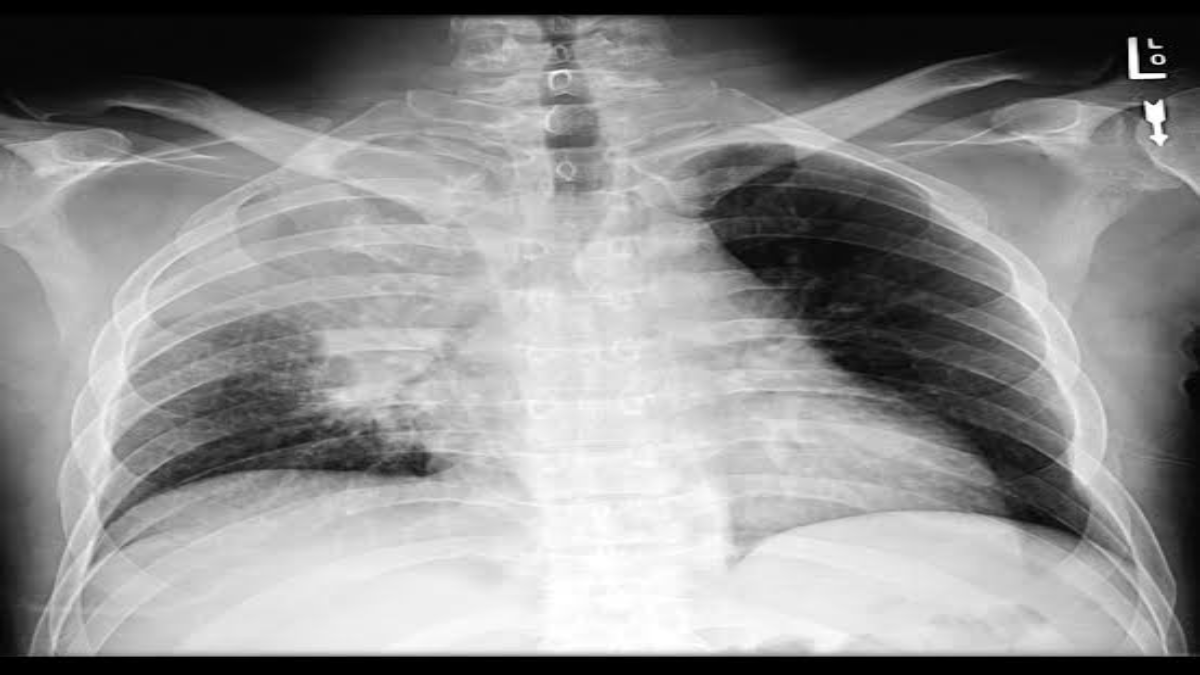World Hepatitis day 2025: Let’s Break It Down

Hepatitis is the inflammation of the liver, often presenting with symptoms such as jaundice, abdominal pain, appetite loss, dark urine, and pale stools. While hepatitis can be autoimmune, alcohol-induced, or viral, viral hepatitis remains the most common. It is classified into five types: A, B, C, D, and E. Among these, Hepatitis B is the most prevalent and is the leading cause of cirrhosis and liver cancer. Globally, an estimated 304 million people live with either Hepatitis B or C. However, hepatitis is preventable and treatable. Vaccination is crucial for preventing hepatitis A and B, and the disease can be prevented through safe sex practices, avoiding sharing needles and practising good hygiene.
On this day, the 28th of July, we commemorate World Hepatitis Day in honour of Dr. Baruch Blumberg (whose birthday it is), who discovered the virus in 1967. It is a means to step up efforts for a greater global response in combating the disease. The 2025 theme, “Let’s Break It Down”, “calls for urgent action to dismantle financial, social, and systemic barriers to eliminating hepatitis and preventing liver cancer”. Despite being preventable, treatable, and, in the case of hepatitis C, curable, the disease continues to be a major burden. The theme focuses on increasing access to treatment by encouraging people to break down the science and stigma in simple terms, making the information accessible, relatable, and actionable for everyone. That becomes our goal for today: to discuss and understand these barriers and how to overcome them.
The World Health Organisation outlines three major types of barriers that stand in the way of eliminating hepatitis:
Financial Barriers
Significant financial hurdles hinder anti-hepatitis efforts globally, especially in low- and middle-income countries (LMICs), which often lack the resources to support comprehensive hepatitis programs, including testing, treatment, and prevention. This disparity in access is particularly evident in regions with high HBV prevalence, such as Africa and parts of Asia. Insufficient funding for health systems in these countries restricts access to essential diagnostic tools like nucleic acid testing (NAT) for hepatitis C (HCV) and poses challenges such as limited cold storage for samples and a shortage of trained healthcare workers. These impede hepatitis elimination programs and limit public awareness campaigns and education, all crucial for increasing knowledge and reducing stigma associated with hepatitis.
Insufficient investment in research and development limits support for scientists working on hepatitis, slowing progress in developing a cure for hepatitis B and more effective treatments for hepatitis C. And while hepatitis is preventable and treatable, significant investment is needed to scale up testing, treatment, and vaccination programs. Inadequate funding hinders strategies like birth-dose HBV vaccination, expanded HCV screening, and safe injection practices. Testing also tends to focus primarily on high-risk groups like blood donors, often excluding vulnerable populations such as people who inject drugs, pregnant women, and those with HIV.
High costs of direct-acting antivirals (DAAs) for HCV make them inaccessible to many in LMICs. Even in wealthier countries, insurance restrictions, such as preauthorization requirements, limited coverage, or high out-of-pocket costs, pose major obstacles. Some insurers only cover treatment for patients with advanced fibrosis, causing delays in care and worsening treatment outcomes.
Social barriers
Lack of awareness and knowledge about hepatitis and its transmission, symptoms, and prevention methods, as well as gaps in knowledge among healthcare professionals, hinder prevention and treatment efforts and contribute to misdiagnosis and inappropriate management of cases. Many people are either unaware of how hepatitis is transmitted or misinformed, which leads to behaviours that increase the risk of infection, such as unsafe sexual practices or sharing needles. It also causes delays in diagnosis, as people often do not seek testing or treatment until the disease has progressed.
Beyond awareness, other social factors hinder the eradication of hepatitis. These include limited access to testing and treatment due to physical barriers like distance to clinics, financial barriers such as out-of-pocket costs, and infrastructural challenges like the lack of cold-chain facilities for vaccine storage. Cultural and religious beliefs also influence health-seeking behaviours, with some cultures having traditions that discourage or delay seeking medical care, or misconceptions about the disease and its treatment. For example, in some African communities, hepatitis B is linked to touching dead bodies or spiritual poisoning, leading individuals to seek help from traditional healers; while in Pakistan, there are misconceptions about vaccines causing infertility. In various communities, traditional herbal medicines are preferred over conventional medical treatments, which delays or hinders proper medical care.
Stigma associated with hepatitis, particularly HCV, due to its link with drug use and injection, also discourages individuals from seeking information about hepatitis and preventative measures, such as vaccination or safe sex practices. This leads to continued transmission and hinders efforts to control the spread of the disease. The shame also affects adherence to treatment plans, with individuals reluctant to disclose their status to healthcare providers or family members, leading to missed appointments, incomplete medication regimens, and reduced effectiveness of treatment. And beyond treatment challenges, people living with hepatitis experience social isolation and discrimination in various aspects of life, negatively affecting their mental health, leading to anxiety, depression, and social withdrawal, and creating additional barriers to overcome.
Systemic barriers
Systemic barriers are deeply ingrained obstacles within structures, policies, and practices that disadvantage certain groups, often unintentionally. These barriers can manifest as unconscious bias and inflexible rules.
Marginalised populations often face barriers in accessing healthcare services, including screening, vaccination, and treatment for diseases such as hepatitis. These barriers can be due to factors like lack of insurance, transportation difficulties, geographical remoteness, and systemic discrimination within healthcare systems. Poverty, social exclusion, and lack of access to education and healthcare disproportionately impact these groups, leading to higher hepatitis infection rates and poorer health outcomes. Unfortunately, certain immigrant subgroups, such as those from endemic areas, may be more vulnerable to hepatitis due to past exposure, yet still face such barriers in accessing care.
Racial and ethnic minorities (particularly among Asian and African immigrant communities, as well as in low-resource regions) face multiple disadvantages in fighting hepatitis, including lower vaccination rates, limited access to testing and treatment, and cultural and language barriers. Language barriers can hinder communication between patients and healthcare providers, leading to misunderstandings and misinterpretations of medical information. In some cases, there is also a lack of health education materials on hepatitis B in the native languages of some minority groups,
An often-overlooked but critically affected group is the incarcerated population. Hepatitis prevalence is significantly higher in correctional facilities, yet access to testing, treatment, and preventative measures is limited. Stigma surrounding hepatitis, both within and outside prison walls, discourages individuals from seeking testing and treatment, and there’s often insufficient information about HCV treatment, particularly for those with ongoing risk behaviours like injecting drugs, who can transmit hepatitis within the prison setting and upon release. Inconsistent and delayed access to prison health services, coupled with a lack of specialised care and transportation, creates obstacles to timely testing and treatment. But then, even the lack of proper discharge planning and post-release support disrupts treatment, especially for individuals managing both hepatitis and substance use.
Recommendations
To overcome the financial barriers, public health policies must prioritise measures such as vaccination, accurate diagnosis, and collaborative efforts through contributions from governments and donors to help negotiate lower drug prices and make treatment more affordable. Linking hepatitis testing and treatment with existing healthcare services, such as HIV or substance use treatment programs, can also improve access to care for vulnerable populations. However, this must be supported by investment in infrastructure and healthcare worker training.
Socially, healthcare access can be improved by addressing barriers such as cost, transportation, and language differences. Educational initiatives about hepatitis B should be delivered in culturally appropriate ways to dispel myths and misconceptions. Public health campaigns and community engagement, especially in partnership with local leaders and organisations, can help reduce stigma and promote culturally sensitive care. Expanding testing and treatment services, particularly in underserved areas, is also crucial.
And finally, it’s crucial to address health equity by tackling the systemic barriers to ensure that marginalised populations have access to the same quality of care as other groups. It is first important to invest in surveillance systems to better track the disease’s prevalence and identify the specific populations at risk, and then target public health campaigns on these people to raise awareness. Integrating hepatitis treatment into primary care and existing healthcare programs, such as maternal and child health, can improve treatment uptake and adherence for those with limited access to specialised services while maximising the impact of available resources. These integrated services help normalise hepatitis and reduce stigma, unlike vertical programs, which inadvertently isolate affected individuals.
In prisons, addressing hepatitis in incarcerated populations is more cost-effective than managing complications arising from untreated infections. So, it is important to increase the number of individuals diagnosed and treated by offering routine, opt-out testing in prisons and collaborating between prison healthcare providers, community healthcare providers, and non-profit organisations to meet the complex needs of this population. Training correctional officers is also important to address negative attitudes and promote a supportive environment for treatment.
Best practices
For medical students and healthcare workers, hepatitis infection poses a significant occupational hazard due to the ease of transmission. Hepatitis A is highly contagious and primarily spreads through faecal-oral contamination, meaning it can be contracted by ingesting contaminated food or water or through close contact with an infected person. Hepatitis B and C are contagious through contact with infected bodily fluids, particularly blood and, in the case of Hepatitis B, also semen and vaginal fluids. Hepatitis C is primarily spread through blood-to-blood contact.
Continuous education and training on hepatitis prevention, risk factors, and safe clinical practices are essential for healthcare workers, especially students in training. Vaccination, particularly against Hepatitis B, is crucial and highly recommended. At the University College Hospital, for instance, clinical students and house officers are mandated to receive the hepatitis B vaccine. This is usually supported by the student association, which occasionally organises subsidised hepatitis B vaccination exercises for its members.
Beyond vaccination, adherence to standard precautions is critical in reducing exposure risks. These include rigorous hand hygiene, proper use of personal protective equipment (PPE), safe handling and disposal of sharps and medical waste, safe injection practices, and consistent environmental sanitation. Together, these practices defend against occupational transmission of hepatitis and are integral to patient and provider safety.
Conclusion
Hepatitis is not a mystery. Yet, many remain undiagnosed and untreated. It is not science that fails us, but the financial, social, and institutional systems. If we are to eliminate the disease, we must break it down: the cost, the stigma, and the silence. And in their place, build systems of access, equity, and care.




